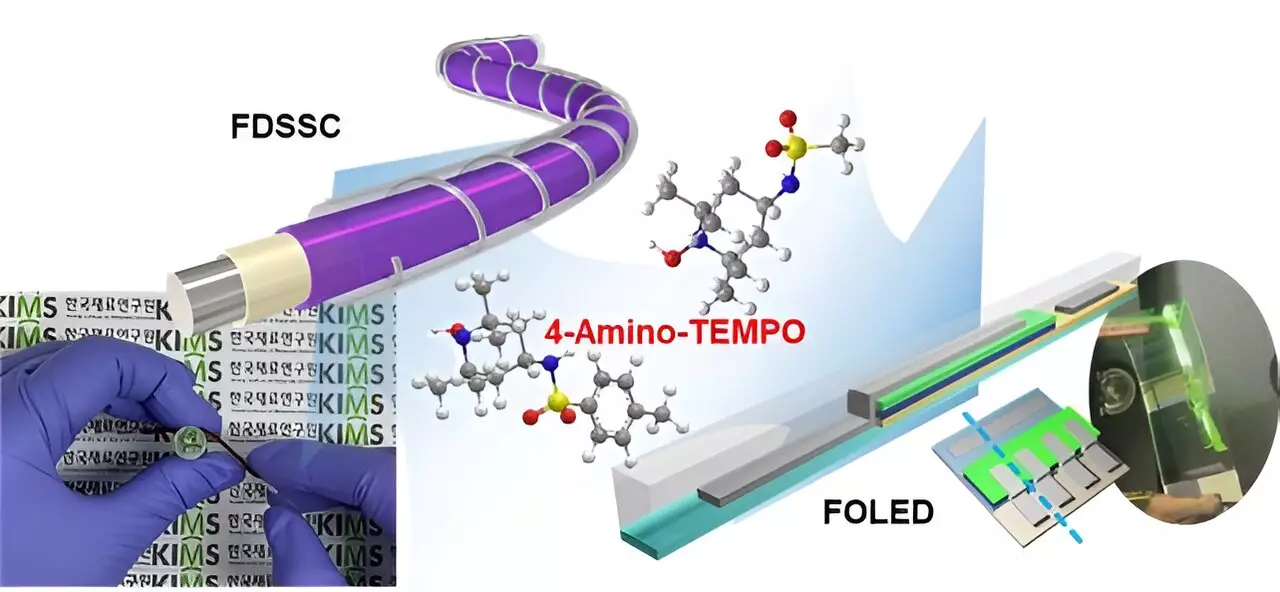In a recent study published in the journal Materials Today Energy, a collaborative research team has successfully developed a 4-Amino-TEMPO derivative with photocatalytic properties. This derivative has been utilized to enhance the performance of fiber-shaped dye-sensitized solar cells (FDSSCs) and fiber-shaped organic light-emitting diodes (FOLEDs). The conventional materials used in electronic devices were challenging to synthesize and mass-produce, leading to poor reproducibility of the devices. The newly developed 4-Amino-TEMPO derivative simplifies the synthesis process, allowing for large-scale production while significantly improving the efficiency of FDSSCs and FOLEDs by more than 20%.
The research team, led by Professor Chul-jin Ahn’s team at Changwon National University, in collaboration with Dr. Jae-Ho Kim and Dr. Myung-kwan Song from the Department of Energy & Electronic Materials, designed and synthesized a material with photocatalytic properties. This material not only enhances the efficiency of FDSSCs but also exhibits high stability in air and moisture, making it suitable for producing high-performance electronic devices. The 4-Amino-TEMPO derivative also demonstrates excellent washing properties and resistance to mechanical shock, further ensuring the durability of the devices.
The 4-Amino-TEMPO derivative has a wide range of applications in various electronic device fields, such as solid electrolytes in lithium batteries, catalysts, solar cells, and organic light-emitting diodes. What sets this technology apart is its ability for mass production through a simple process, making it cost-effective for electronic device companies. These derivatives can be mass-produced at low costs, offering significant economic benefits for manufacturers.
Dr. Myung-kwan Song, the lead researcher of the study, emphasized the importance of leveraging multifunctional materials to enhance performance and reliability in electronic devices. The development of the 4-Amino-TEMPO derivative represents a significant advancement in the field of electronic devices, paving the way for the production of high-performance and stable FDSSCs and FOLEDs. With its cost-effective manufacturing process and multifunctionality, this technology holds great promise for widespread application in the electronics industry.


Leave a Reply